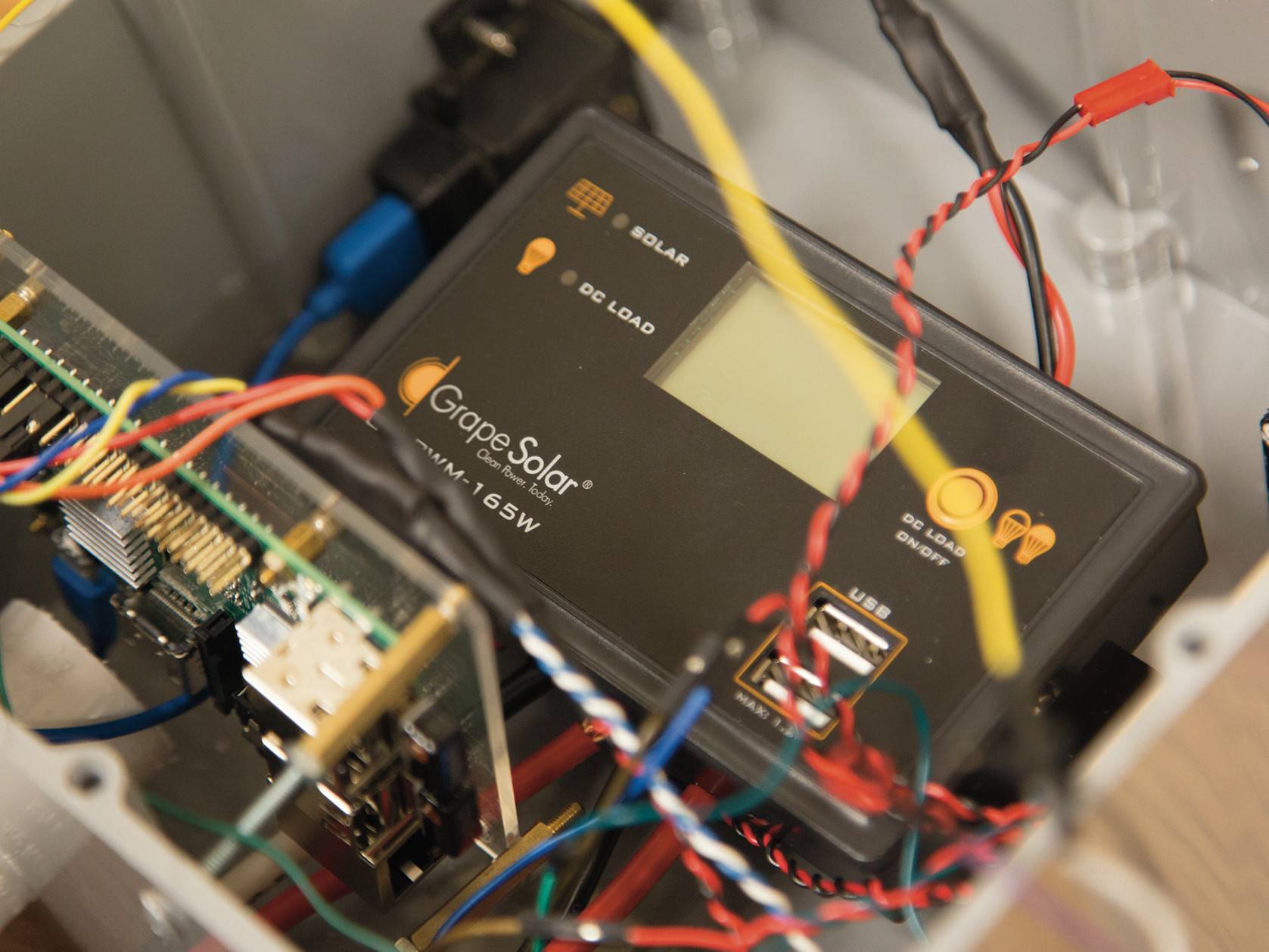Engineering Senior Design Day

Engineering Senior Design Day
by Jack McClellan
Students, industry meet over real-world projects
An engineer can truly appreciate the evolution of the Ingram School of Engineering’s biggest showcase, called Senior Design Day. After all, the one-day event each fall and spring is all about design concepts such as efficiencies and scaling. The first Senior Design Day was held in spring 2014. But even then, the Ingram School’s director, Dr. Stan McClellan, had a vision for an event with greater visibility — and presented on a grander scale.
So Senior Design Day was moved from the confines of the Mitte Complex to the more spacious Embassy Suites San Marcos Conference Center, and the event itself took on a much more professional tone: Engineering students now wear business suits; leaders from local, state, and national industries circle the exhibit space for potential new recruits; and industry sponsors are tied to each senior design project.
“Two ways students interact outside of the somewhat contrived, academic environment are research and design of products, and processes based on realistic constraints. It’s closer to the real world,” says McClellan.
“Industry-sponsored projects have a lot of depth and interest. It helps students get jobs after they graduate. We've had situations where students finish their senior design presentations and representatives from companies chase them out into the hall .”
— Dr. Stan McClellan
A senior design or capstone project is a two-semester sequence class, which acts as an introduction to the design process. Students form groups, industry partners offer potential projects, and students choose a partner and project. This type of capstone project is a requirement for an engineering program to maintain accreditation, as well as a chance for students to gain valuable experience outside the typical classroom environment.
“We want the students to stretch out beyond their experience,” McClellan says. “Industry-sponsored projects have a lot of depth and interest. It helps students get jobs after they graduate. We’ve had situations where students finish their senior design presentations and representatives from companies chase them out into the hall.”
Indeed, there were more than just a few business cards distributed as the fall event progressed. Industry members also asked pointed questions of the students, sat in on presentations, and assisted in grading the projects.
“There are many benefits to working with industry partners,” says electrical engineering major Michael Rodriguez. His team developed a rainfall detection and alarm system for Ingram Readymix Inc. Teammates included fellow electrical engineering majors Darryl Balderas, Chui Sian Chin, Matthew Smith, Tyler Shafer, and Jeff Kilgore.
“Students are able to work on real-world problems and use their engineering skills to address the task given. That prepares the students for their professional careers because they have been exposed to the simulated professional environment of senior capstone. The industry partners provide great technical support and mentorship,” Rodriguez says.
The 25 Senior Design Day projects on display last December were spread across the disciplines of electrical, computer, and manufacturing engineering.
Among these was an olfactory delivery system, designed for NASA. The “proof of concept” system the students designed holds six scents that are released on demand through a computer system, using induction heating. Because fragrance is linked to memory, the system is aimed at combating the negative psychological effects of the “clean environment” of space travel. Senior manufacturing engineering major James J. Cerda was grateful for the opportunity to work with the government rocket scientists.
“Working so closely with NASA has awakened me to industry standard practices and concerns that as a student you don’t have to take in consideration,” Cerda says. “The capstone event feels more like a ceremony commencing the student into the industry, which, to me, has more value than graduation itself.”
Along with Cerda, engineering students working on this project include Kelsey Melhorn, Daniel Slaughter, Daniel Shafer, Ivan Juarez, Robert Fernandez, and David Jaime, the group’s chemistry major.
Seniors Jaime Perez, Joshua Sorenson, and Yohannes Derso developed a system for aligning charges of perforating guns — used in fracking — for Hunt & Hunt, a Houston-based precision machine shop with ties to the oil and gas industry. This system uses intelligent image analysis, the same kind used in facial recognition software, to correctly place the segments of the gun. The students were given a target of 30 seconds in which to align each segment; their latest tests achieved alignment in four seconds.
The industry members likewise found the day educational and opportunity filled. “From our end, we’re getting exposure in the college and with the students,” says Kevin Kemp, with NXP Semiconductors of Austin. He sits on the school’s Industrial Advisory Board, which helps with curriculum alignment and development of industry-friendly processes.
NXP sponsored four projects at the fall event and Kemp confirmed the symbiotic nature of the event from the industry side. “Of course, we also recruit from the university — identifying potential students for hiring is part of the deal, as well,” he says. ✪